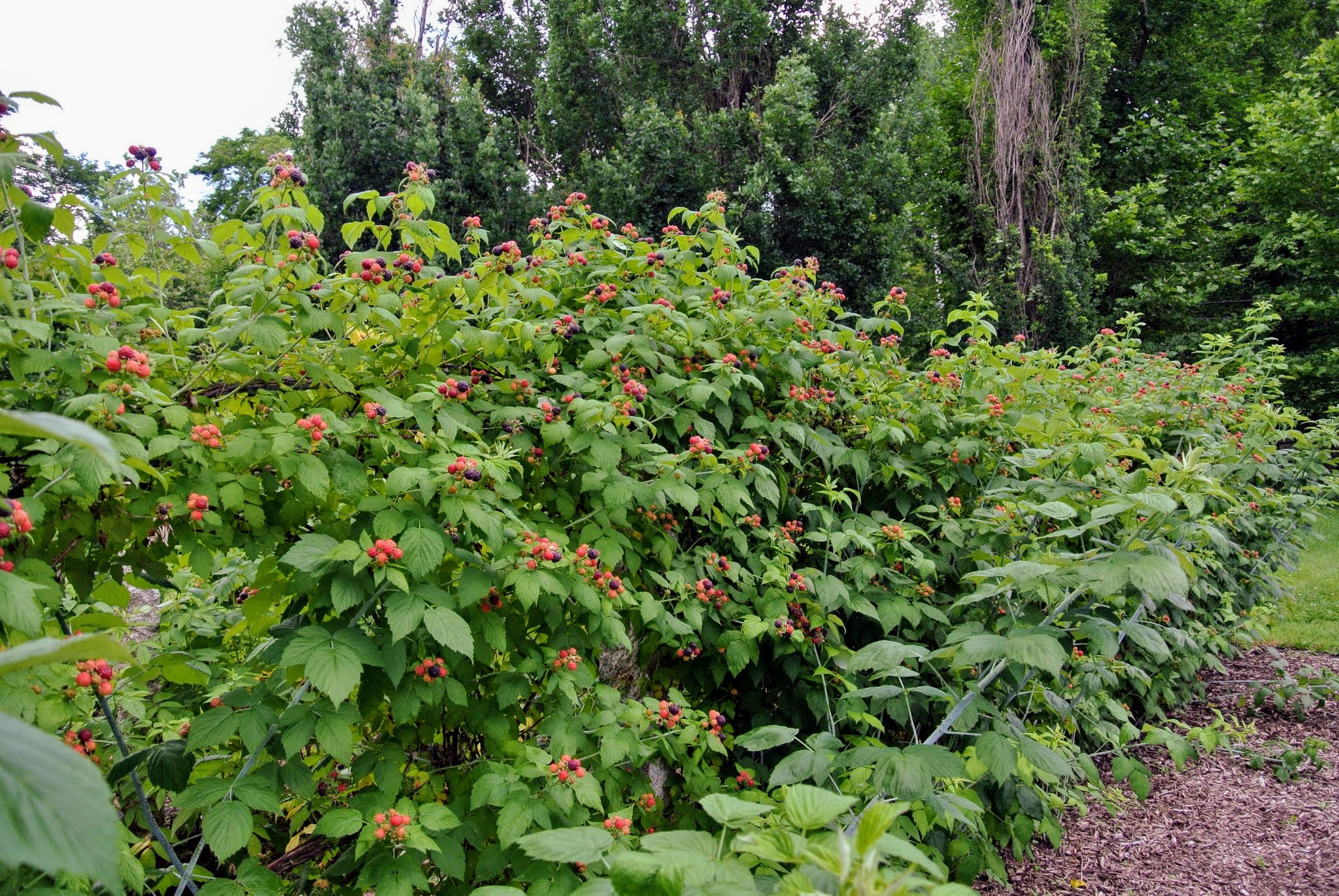Do Raspberries Grow On Vines

Do raspberries grow on vines
Raspberry bushes are easy to grow and yield an impressive harvest. A few bushes will give you enough fruit to eat, preserve, and share. Berries are a fantastic source of antioxidants, vitamins, and fiber. They're also delicious.
Is raspberry a climbing plant?
The care of raspberry plants sounds like a lot of work, but it's really quite simple. You can train these bushes to grow along fences and even to climb up on trellises.
Is there a raspberry vine?
Raspberry vines, technically called canes, are the part of the raspberry plant that grows above the ground. Green vegetation followed by sweet fruit grow upon the vines. Some varieties of raspberries have vines that reach upward 7 feet: others may only grow 4 feet tall.
Do raspberries need a trellis to grow?
Of course, you can grow raspberries without any support, but a trellised raspberry is a thing of beauty. Growing raspberries on a trellis improve fruit quality, makes harvesting much easier, and reduces the incidence of diseases.
Do raspberries need something to climb on?
They are even more delightful if properly trellised! No matter what kind of trellis you design for your raspberries, the goal is simple: Keep the canes and fruit off the ground and leave enough walking space on each side for harvest. Raspberries trellised with metal and wire on a small farm.
What is the best way to trellis raspberries?
A two-wire permanent trellis is commonly used for raspberries in the home garden. Its construction requires wooden posts, No. 12 or 14 galvanized wire, and 2- by 4-inch lumber. The wooden posts should be 3 to 5 inches in diameter and 6 to 8 feet long.
Are creeping raspberries poisonous?
The fruits are edible and tasty, but they're tiny, so don't expect an abundant harvest.
Is raspberry a creeper?
Creeping Taiwan Bramble, Crinkle-Leaf Creeper, Yü-Shan Raspberry, Rubus pentalobus, Rubus rolfei. Rubus calycinoides (Creeping Raspberry) is an evergreen groundcover forming a dense carpet adorned with long spreading branches clothed in lustrous, emerald green, thickly textured leaves.
What do wild raspberry vines look like?
Wild raspberry, or Rubus idaeus, can easily be identified by its three or five compound serrated leaflets, its prickly thorns, and, most specifically, its little white blooms that grow into tasty red berries. This bush is found throughout eastern North America growing in thickets along roadsides and trails.
What looks like a raspberry but grows on a tree?
The Kousa Dogwood is one of those plants that makes you ask: What is it? Kousa dropping fruit in Boone North Carolina. Its large, bumpy, red fruit looks like a raspberry on steroids. Very eye catching and exotic, which it is in North America.
Does creeping raspberry produce fruit?
The fruits look just like red raspberries, but are distinct in color. Vividly yellow to orange-red, they sometimes almost achieve true red coloration. Creeping raspberry also produces edible fruit right after the early summer bloom. Space individual plants 4-6 feet apart to allow room for plant growth.
Why do blue raspberries not exist?
There is no such thing in nature as a blue raspberry. Even if you find a blue raspberry product with natural flavors it probably doesn't have any actual raspberry flavor. Less expensive juices such as apple and orange are more commonly used in these products.
Where should you not plant raspberries?
Raspberry bushes should not be planted in an area where potatoes, tomatoes, eggplant or strawberries have grown in the last five years. They also should not be planted near these growing plants because of blights and other fungal diseases, like verticillium wilt, which can spread from these plants to raspberries.
What should not be planted near raspberries?
Avoid planting nightshades like tomatoes, potatoes, and eggplants near your raspberry plants. You may also wish to avoid planting fennel or strawberries nearby. Read on to learn all about the best companion plants for raspberries!
Do you cut raspberries down every year?
A major advantage of primocane-fruiting raspberries is how easy they are to prune. Simply cut the canes to the ground each year in the late fall or early spring when they are dormant. Use a mower, sharp lopper, or hedge trimmer.
How tall should raspberry trellis be?
Attach a wire securely with u-nails or staples to each end of the cross arm at about 36 inches high for red raspberries and 40 inches high for the black and purple types. Wires can be wrapped one or two times around the post. Make wire as tight as possible.
Do all raspberries need support?
It might seem an arduous task but your raspberries really do need supporting and tieing in; most varieties will grow 6-8' tall, and in windy weather they will get blown about and some canes will fall into the rows making a very messy bed, which will become difficult to maintain and harvest.
Are raspberry bushes invasive?
Raspberries are vigorous and can be locally invasive. They propagate using basal shoots (also known as suckers), extended underground shoots that develop roots and individual plants. They can sucker new canes some distance from the main plant.
Do raspberries need a fence to grow on?
Many grow to head-height. A trellis or a fence are good options. If you have a row, drive in two six-foot posts at the end of the row and stretch galvanized wire between the posts. Summer-fruiting raspberries need three horizontal wires and the fall types could do with two wires.
How do you grow raspberries so they don't spread?
If you want to keep them in one spot, you must replenish the soil by topdressing with leaf mould and homemade compost in autumn and spring. Alternatively, if you have space, let them move around. You don't have to let them take over, but you can let them wander to new spots.









Post a Comment for "Do Raspberries Grow On Vines "